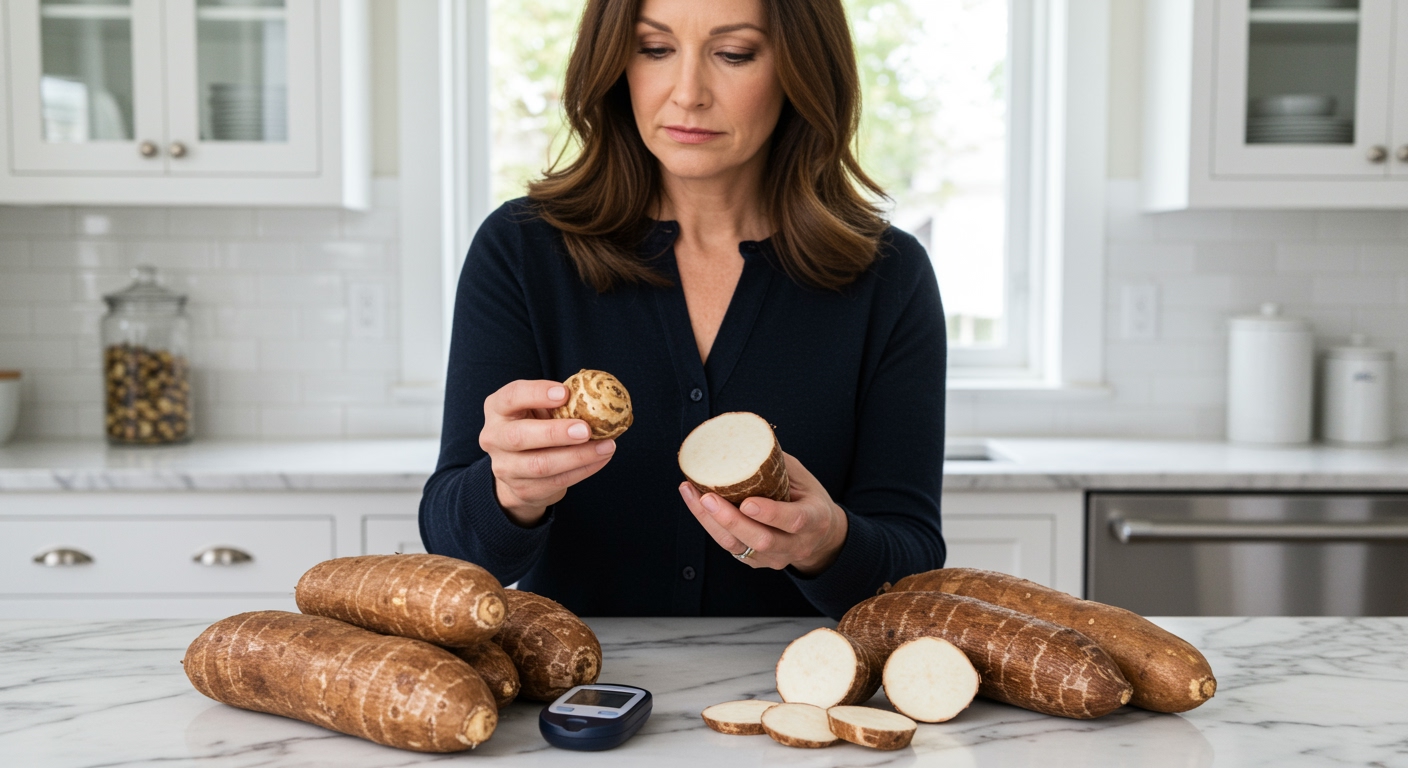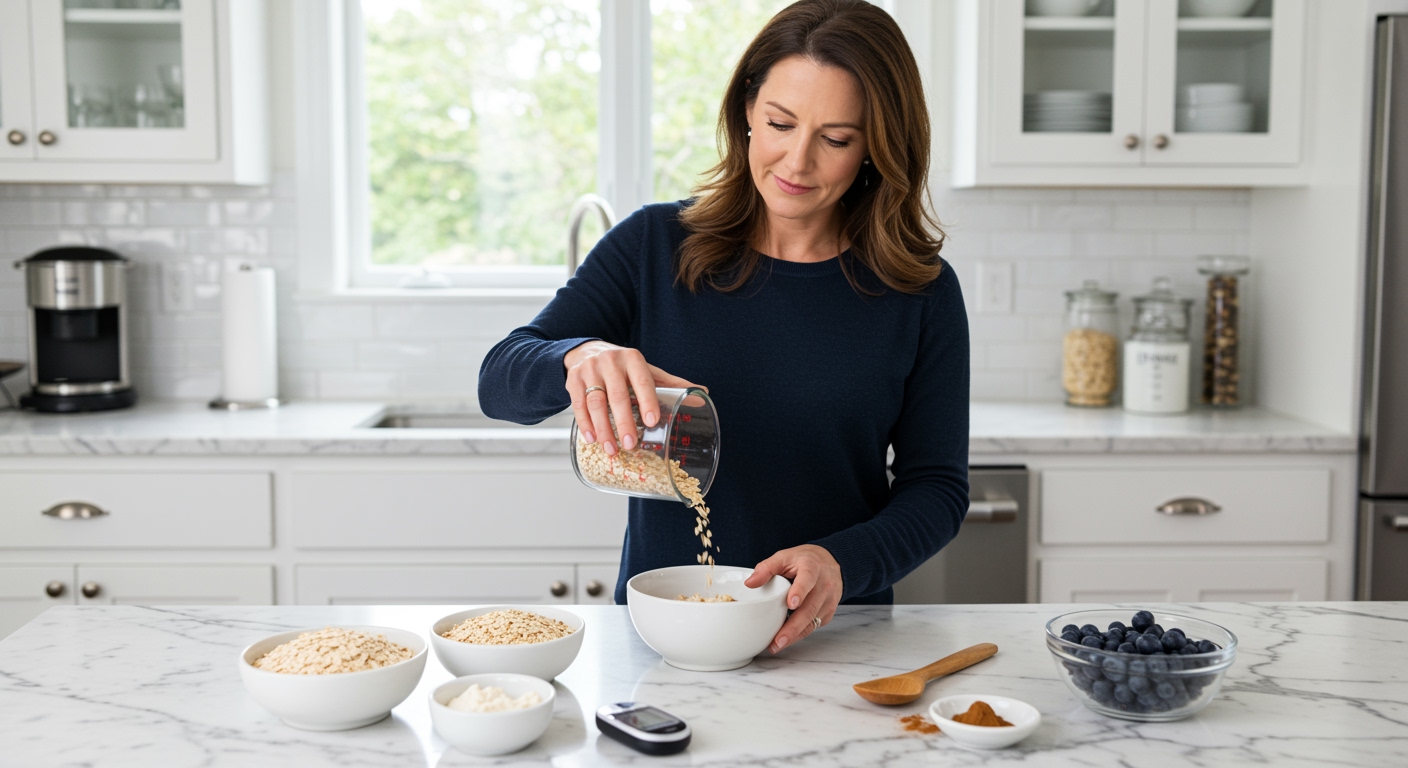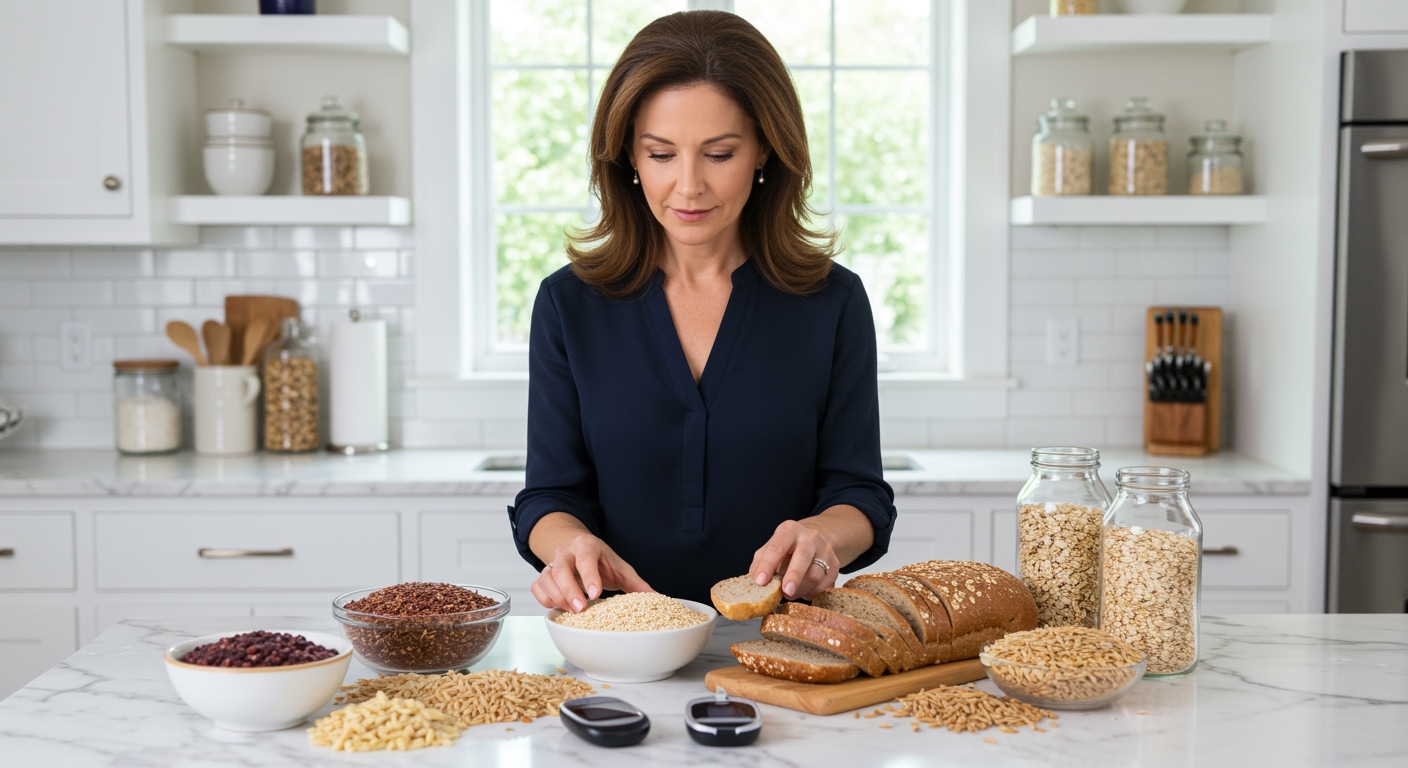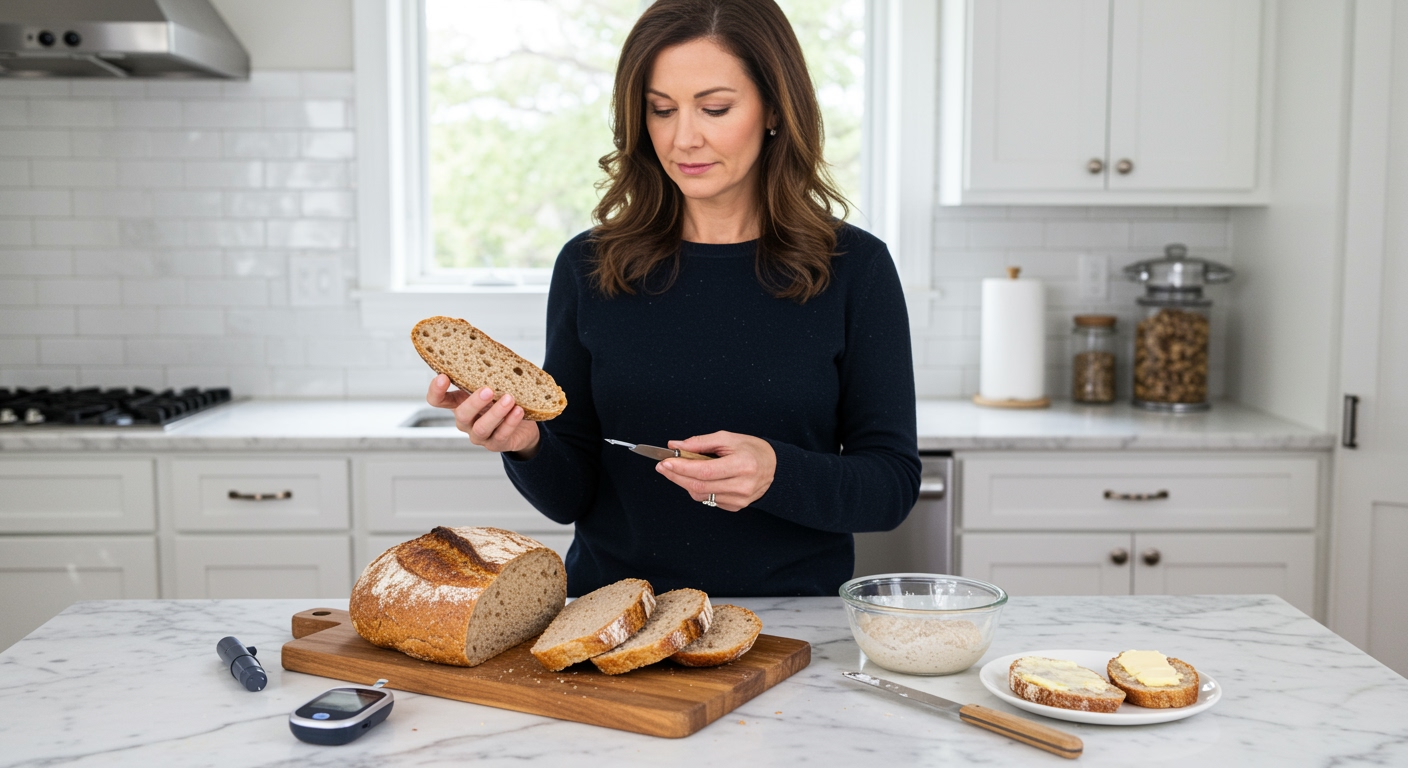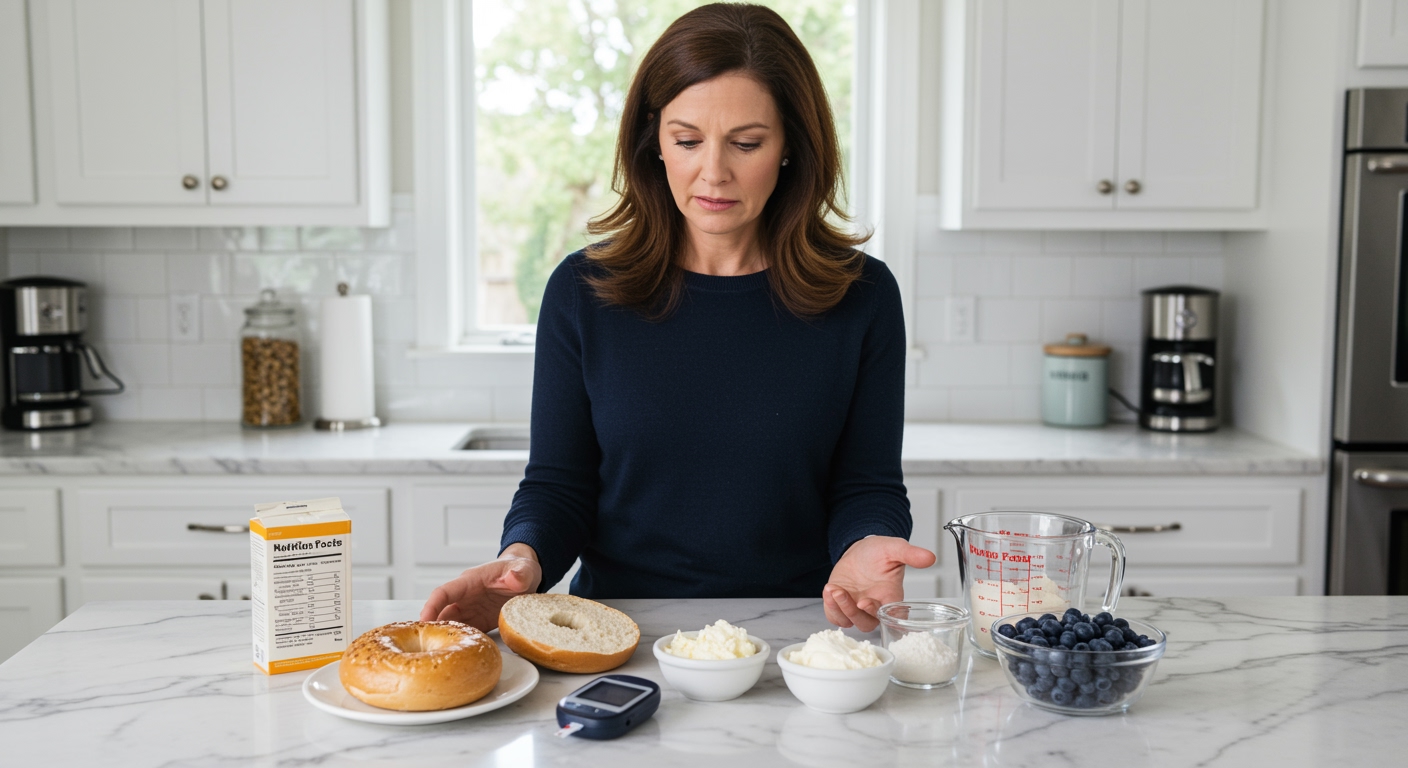✪ Key Takeaway: Yams can be part of a diabetes diet when eaten in controlled portions and prepared properly to minimize blood sugar spikes.
Introduction
Your doctor just told you that you have diabetes and now every food feels like a potential enemy.
You stand in the grocery store staring at yams and wondering if this starchy vegetable will send your blood sugar through the roof or if it might actually be safe to eat.
Hi, I am Abdur, your nutrition coach and today I am going to explain exactly how yams affect blood sugar levels and whether they deserve a place in your diabetes management plan.
What Makes Yams Different From Other Starchy Vegetables?
Yams belong to a completely different plant family than sweet potatoes, despite what most grocery stores tell you.
True yams have rough, bark-like skin and white or purple flesh that contains unique compounds called diosgenins.
These natural compounds may actually help your body process glucose more effectively than other starchy vegetables.
Research shows that yams contain resistant starch, which behaves differently in your digestive system compared to regular starch.
Resistant starch passes through your small intestine without being fully digested, which means it causes a slower, gentler rise in blood sugar levels.
The fiber content in yams also helps slow down the absorption of carbohydrates, giving your body more time to produce insulin and manage glucose levels effectively.
✪ Fact: One cup of cooked yam contains about 4 grams of fiber, which helps slow carbohydrate absorption.
How Do Yams Affect Your Blood Sugar Levels?
The glycemic index of yams ranges from 35 to 77 depending on the variety and cooking method you choose.
Raw or minimally processed yams typically fall on the lower end of this range, making them a moderate glycemic index food.
When you eat yams, the carbohydrates break down into glucose, but the process happens more slowly than with refined carbohydrates like white bread or candy.
Your pancreas responds by releasing insulin to help cells absorb the glucose, but the gradual release prevents the dramatic spikes that can be dangerous for people with diabetes.
Studies indicate that the antioxidants in yams may also help improve insulin sensitivity, which means your cells become better at using the insulin your body produces.
However, portion size matters tremendously because even moderate glycemic index foods can cause problems when you eat too much at once.
A reasonable serving size is about half a cup of cooked yam, which contains approximately 20 grams of carbohydrates.
✪ Pro Tip: Always pair yams with protein or healthy fats to further slow down glucose absorption.
What Cooking Methods Keep Blood Sugar Stable?
The way you prepare yams dramatically changes how they affect your blood sugar levels.
Boiling or steaming yams keeps their glycemic index lower compared to baking or frying methods.
High-heat cooking methods like roasting break down the resistant starch and fiber structure, making the carbohydrates more readily available for absorption.
Cooling cooked yams in the refrigerator actually increases the resistant starch content through a process called retrogradation.
This means leftover yams eaten cold or reheated gently may have less impact on your blood sugar than freshly cooked ones.
Adding healthy fats like olive oil or nuts to your yam preparation helps slow gastric emptying, which further reduces the speed of glucose absorption.
Avoid adding sugar, honey, or other sweeteners to yams because these additions will cause unnecessary blood sugar spikes.
✪ Note: Mashing yams increases their glycemic impact because it breaks down the fiber structure.
Should You Include Yams In Your Diabetes Diet Plan?
Yams can absolutely be part of a well-planned diabetes diet when you follow smart portion control and timing strategies.
The key is treating yams as your primary carbohydrate source for that meal rather than adding them on top of other starches.
Replace refined grains like white rice or pasta with properly portioned yams to get more nutrients and fiber while managing blood sugar.
Timing matters too because eating yams earlier in the day gives your body more time to process the carbohydrates through natural activity and movement.
Monitor your individual response by checking blood sugar levels 1-2 hours after eating yams to understand how your body specifically reacts.
Some people with diabetes find they can tolerate yams better when eaten as part of a balanced meal with lean protein and non-starchy vegetables.
Work with your healthcare provider to determine if yams fit within your specific carbohydrate targets and medication schedule.
✪ Pro Tip: Keep a food diary to track how different yam preparations affect your personal blood sugar patterns.
The Bottom Line
Yams can be a nutritious addition to a diabetes-friendly diet when you prepare them properly and control your portions carefully.
Smart food choices are not about elimination but about understanding how different foods work with your body, and yams offer valuable nutrients that can support your overall health goals.
I would love to hear about your experience with yams and blood sugar management, so please share your questions or feedback in the comments below.
References
At NutritionCrown, we use quality and credible sources to ensure our content is accurate and trustworthy. Below are the sources referenced in creating this article:
